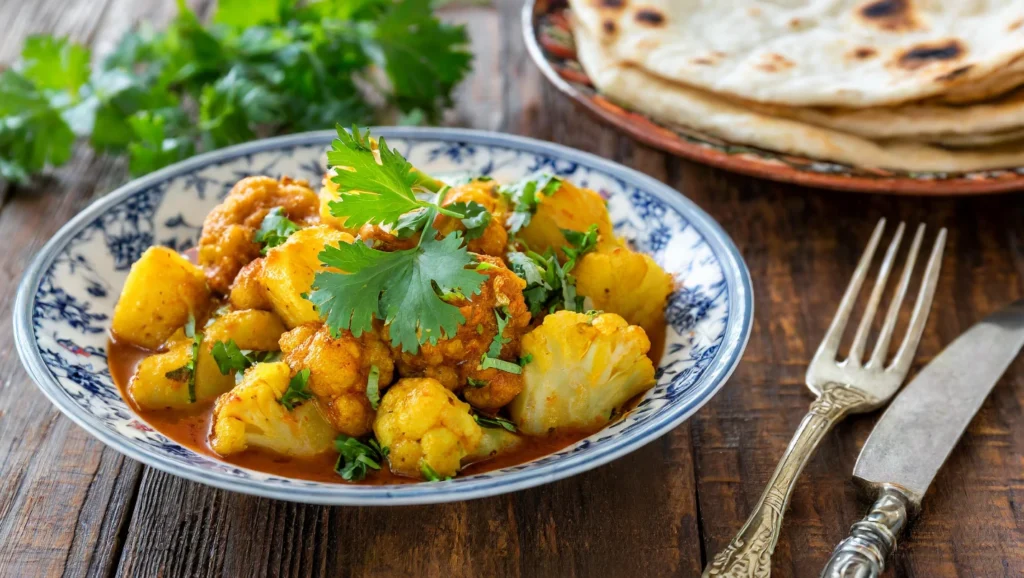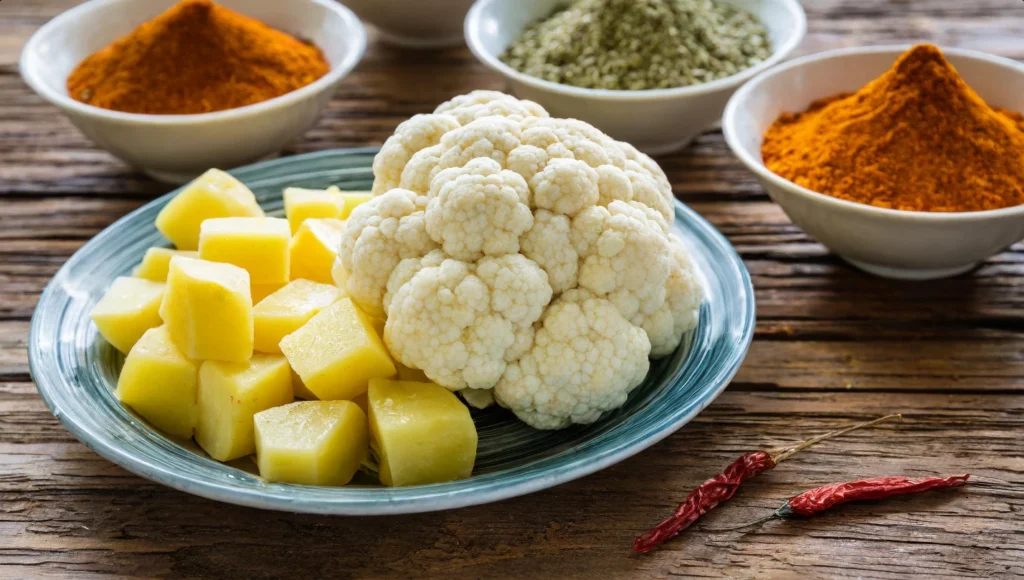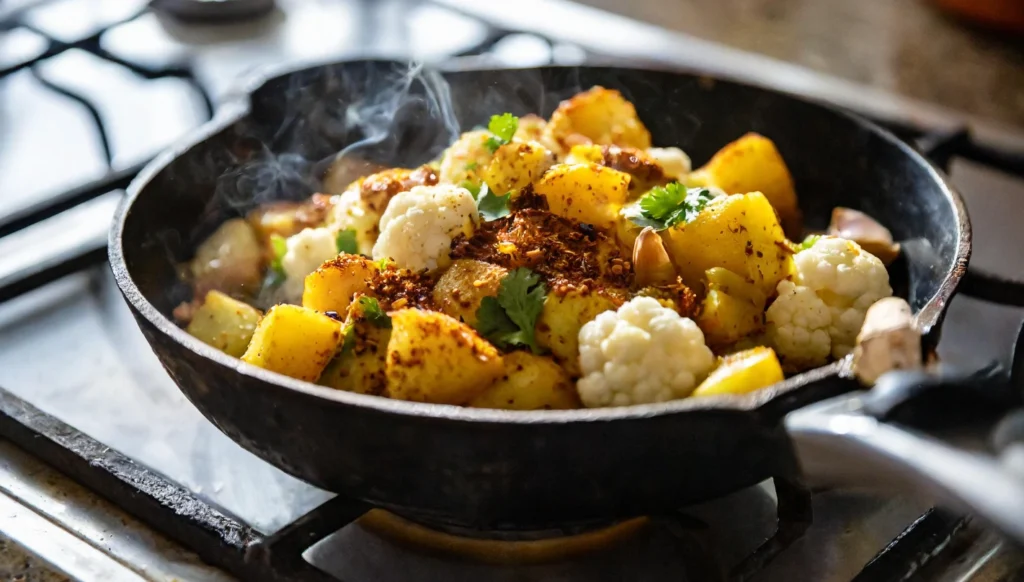
Discovering the Diversity of Indian Cauliflower Recipes
Cauliflower, a cruciferous vegetable hailed for its nutritional benefits, takes center stage in the rich tapestry of Indian cuisine. Indian cooks have long celebrated cauliflower’s versatility, transforming it into an array of dishes that highlight the region’s aromatic spices and vibrant culinary traditions. From the humble streets of Delhi to the coastal shores of Chennai, Indian cauliflower recipes offer a delicious exploration of flavors that appeal to vegetarians and meat-eaters alike.
Among the plethora of Indian cauliflower recipes, classics like Aloo Gobi, Gobi Paratha, and Gobi Masala stand out. These dishes weave together the simplicity of cauliflower with the complexity of Indian spices, creating meals that are both nourishing and satisfying. For those new to Indian cooking, exploring these recipes offers an insightful introduction to the cuisine’s foundational techniques and flavor profiles. Indian Spices Guide provides a detailed look into the spices that breathe life into these recipes, making it an essential resource for aspiring chefs.
Traditional Indian Cauliflower Recipes

- Aloo Gobi (Potatoes & Cauliflower): This beloved dish marries the earthiness of potatoes with the subtle, nutty flavors of cauliflower, all coated in a rich blend of cumin, coriander, turmeric, and ginger. Serve it as a hearty side or a main dish with warm, fluffy naan.
- Gobi Paratha (Cauliflower Stuffed Bread): Stuffed with spiced cauliflower, these breads are a breakfast staple in North India. Crisp on the outside and soft on the inside, Gobi Paratha is a testament to the versatility of cauliflower.
- Gobi Masala (Cauliflower Curry): A sumptuous curry where cauliflower florets simmer in a tangy tomato-based sauce enriched with Indian herbs and spices. It’s a comforting meal that pairs perfectly with rice or bread.
Modern Twists on Classic Recipes
The evolution of Indian cauliflower recipes has seen traditional dishes reimagined with a modern twist, making them suitable for contemporary palates and dietary preferences.
- Cauliflower Rice Pilaf: A modern, low-carb alternative that uses cauliflower rice as the base, spiced with cardamom, cloves, and cinnamon for an aromatic side dish.
- Roasted Cauliflower with Indian Spices: Simple yet impactful, this dish involves roasting cauliflower to perfection with a spice mix that includes garam masala and chili powder, highlighting the vegetable’s ability to absorb and enhance flavors.
- Cauliflower Tikka Masala: A vegetarian twist on the classic, this recipe uses roasted cauliflower pieces in a creamy, spiced tomato sauce, offering a deliciously rich and hearty meal.
The transition from traditional to contemporary Indian cauliflower recipes showcases the ingredient’s flexibility and the cuisine’s adaptability to global trends. For those looking to dive deeper into the health aspects of cauliflower, Nutritional Benefits of Cauliflower provides comprehensive insights into why this vegetable is a staple in health-conscious kitchens around the world.
As we explore further the intricacies of Indian cauliflower recipes, the importance of technique, spice, and innovation comes to the forefront, promising a culinary journey that’s as enriching as it is delicious.
Advanced Cooking Techniques and Tips

Mastering Indian cauliflower recipes goes beyond following instructions; it’s about embracing the art of Indian cooking and understanding the subtleties that elevate a dish from good to extraordinary. Here are some advanced tips to enhance your culinary creations:
- Selecting the Perfect Cauliflower: Look for tight, white florets with vibrant green leaves. The freshness of your cauliflower can significantly impact the taste and texture of your dish.
- Roasting for Depth: Roasting cauliflower before adding it to curries or as a side can introduce a depth of flavor and a delightful texture contrast.
- Marinating for Flavor: Similar to meat, cauliflower absorbs flavors beautifully. Marinating florets in a mixture of yogurt and spices before cooking can infuse your dishes with complex flavors.
Embracing these techniques will not only improve your Indian cauliflower recipes but also broaden your cooking repertoire, allowing you to experiment with confidence and creativity.
Health Benefits and Nutritional Information
Cauliflower is not just versatile in the kitchen; it’s also a powerhouse of health benefits. Low in calories yet rich in vitamins and minerals, it supports health in numerous ways:
- Rich in Vitamins C and K: Essential for immune function and bone health.
- High in Fiber: Promoting digestive health and may aid in weight loss.
- Contains Antioxidants: Offering protection against inflammation and chronic diseases.
Incorporating cauliflower into your diet through Indian cauliflower recipes is not only a treat for your taste buds but also a boon for your health. For more detailed nutritional information, the article on the Nutritional Benefits of Cauliflower is a valuable resource.
FAQs Based on “People Also Ask”
- What spices go well with cauliflower in Indian cooking?
- Turmeric, cumin, coriander, garam masala, and mustard seeds are staples that complement cauliflower’s mild flavor, adding warmth and depth to the dishes.
- How can I make my Indian cauliflower dish more flavorful?
- The key is in the tempering of spices, a technique where spices are roasted in hot oil to release their essential oils, and marinating the cauliflower before cooking to absorb the flavors fully.
- Can Indian cauliflower recipes be made vegan or gluten-free?
- Absolutely! Many recipes are naturally vegan and gluten-free, and others can be easily adapted by substituting ghee with oil and ensuring all other ingredients meet dietary needs.
- How do I store leftovers of Indian cauliflower dishes?
- Store in an airtight container in the refrigerator for up to three days. Some dishes may even taste better the next day as the flavors continue to meld.
Concluding our journey through Indian cauliflower recipes, we encourage further exploration into the rich flavors of Indian cuisine and the versatility of vegetables. Discover the secrets of a creamy Makhani Sauce or broaden your veggie horizons with Smashed Broccoli and Salt-Crusted Baked Potatoes. These dishes not only complement our cauliflower delights but also enrich your culinary adventures with their unique tastes and textures.
Exploring these recipes not only offers a foray into the delightful complexities of Indian cooking but also contributes to a balanced and nutritious diet. So, the next time you’re pondering over what to cook, consider the versatile cauliflower and the myriad of delicious possibilities it holds within the realm of Indian cuisine.
